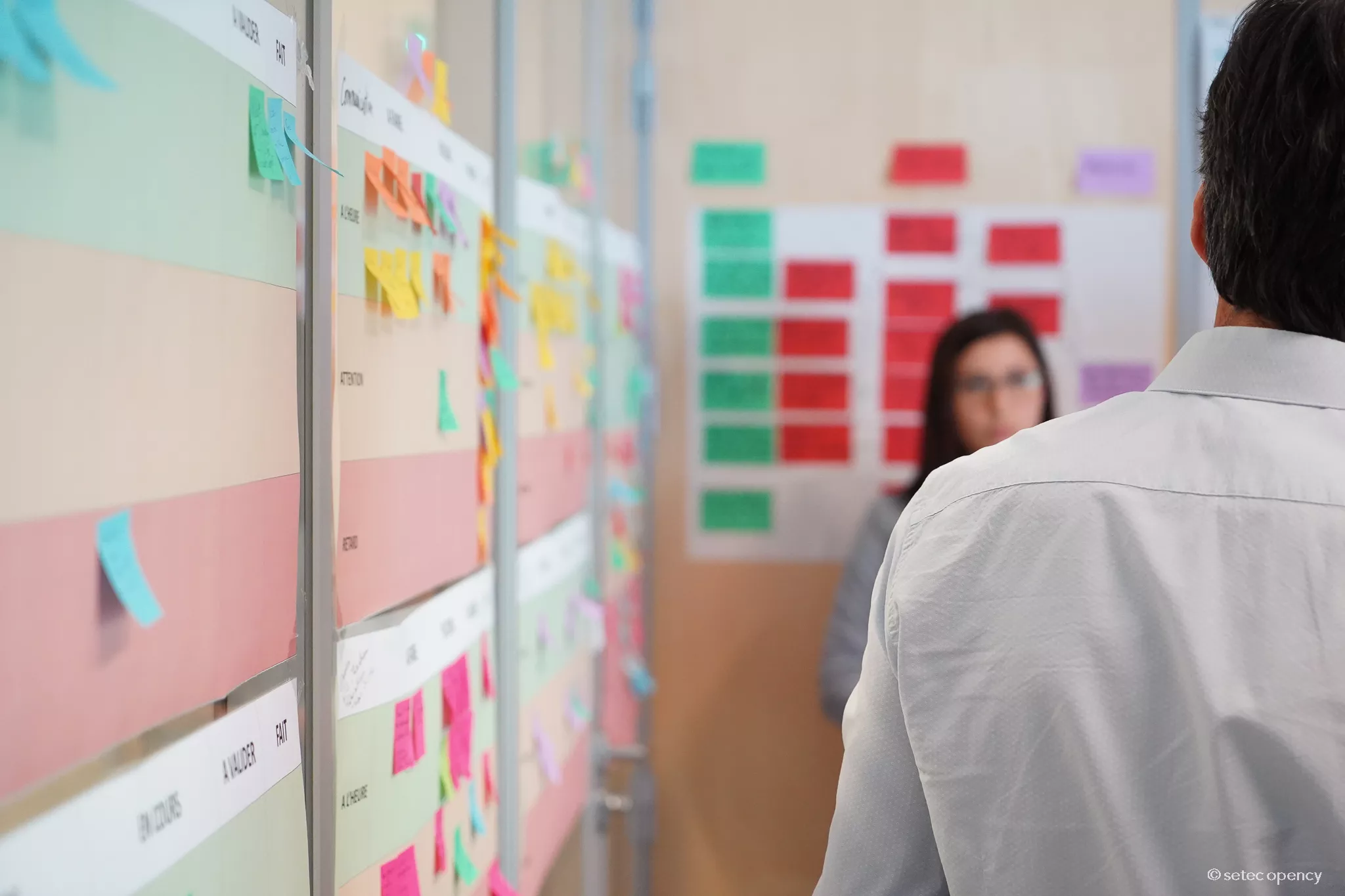Throughout all Lean approaches, we find the constant desire to optimise the use of resources, quality, safety and deadlines in a collaborative environment. Lean also reflects technical, human and organisational developments in the construction and public works sector. Quentin Guyon-Carrard, Responsible for the Lean Management activity, provides an update on this approach.
What are Lean Management and Lean Construction?
It is a collaborative approach to project management that aims to create value for the client by eliminating all forms of waste. In a continuous search to improve the performance of a process, a project or a company, everyone collectively focuses on achieving the right results at the right time. This approach can be adapted to any type of project or sector.
Lean Construction is the adaptation of Lean Management to the construction sector. It can be applied to building, infrastructure, urban development, transport and other projects. When we work for a project owner, these aspects are included in our SCMC or AMO assignments. But we can also work for a project management company, a general contractor or a large contracting entity.
Our priority is to bring together the different stakeholders involved in a project to achieve shared objectives, such as meeting deadlines. With this in mind, we use more flexible methods and collaborative project management tools to optimise the coordination of studies, the supply chain and the works.
Can you give us some examples of how you have applied these methodologies?
When a worksite begins, for example, we organise collaborative planning workshops using post-it notes with the contractors, the project owner and the contracting authority in order to draw up a “geo-temporal” schedule. By involving everyone in this exercise of co-constructing the detailed schedule, the contractual timetable can be effectively made reliable. This method has been successfully used on numerous projects, including the restoration of Notre-Dame Cathedral in Paris.
Then, for the duration of the project, we use equally collaborative and visual tools such as the Dynamic SOP and the LPS (Last Planner System). These tools enable us to plan all our work with the operational staff to the very last day, 3 to 4 weeks in advance.
We can also apply methods for optimising workstations, stock management and deliveries on site, in order to reduce the small amounts of waste that occur on a daily basis.
There is also a whole range of performance indicators to identify any potential deviation as early as possible, and problem-solving tools that help you make the right decisions at the right time.
And to complete the process by involving the project owner, project manager and operational staff, we can also structure and run more strategic visual management workshops. This is the case on the TELT project, for example.
And the results are positive?
Yes, which is why we are continuing! This is a collaborative and human approach, so it is not all as straightforward as you might think, but if it is done properly, it gives very good results. Our clients and companies are very happy with it, and they request it for future operations, so that is a good sign.
What makes this approach stand out in a market that remains highly competitive?
Developed since 1945 at Toyota, the Lean philosophy is challenging conventional practices in the construction and public works sector, with a clear acceleration over the last 7/8 years.
It improves both overall satisfaction and the individual interests of project owners and companies (and their employees) in a win-win situation. In human terms, it helps to reduce stress by being proactive rather than reactive.
Finally, at a time when construction sites may be under more pressure from deadlines and with less space available, and when the sector is quite rightly seeking to reduce the amount of waste generated, the Lean approach is even more relevant when it comes to optimising the mobilisation of teams and the use of materials.
At setec, we have invested heavily in a customised internal training programme, currently dedicated to our SCMC teams. Today, 100% of employees are “familiar” with Lean Management, 80% of SCMC coordinators and managers are Yellow Belts and we have a Lean team made up of Green Belts and Black Belts (the ‘Belts’ are official Lean certifications).
And with this team, what are the next objectives for 2024?
There are several areas of focus, but on the construction side, our first Lean assignments to strengthen coordination of the design phases have produced very good results, so we are going to continue to consolidate our methodologies.
With regard to the digitalisation of our Lean practices, since 2021 we have been building a partnership with the Canadian start-up Nialli, which develops software for animating our tools on large multi-touch screens. Paper post-its are replaced by digital post-its, with a capitalisation and automation of data processing that will be of great interest in the future. In 2024, we will be stepping up this partnership with the creation of showrooms at our offices in Central Seine, Paris and Le Corner, Lyon.
And finally, as we leave the construction and public works sector for the services sector, we are also getting very good feedback on our training and support assignments. So we continue, capitalising on feedback, improving and consolidating. Step by step…
